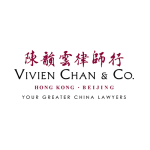The Anti-Unfair Competition Law (AUCL) of the PRC has always been regarded as a useful supplement when the specific intellectual property laws are not directly applicable or are not sufficiently effective in an intellectual property infringement dispute. The AUCL has long been relied on by businesses to restrain other parties from enjoying the fruit of their labour or fame, and causing confusion. It is especially useful when the party complained of does not, technically speaking, infringe any registered intellectual property rights, but instead enjoys benefits it is not entitled to such as using in some way business practice, trade dress or content created by the plaintiff, such as copying the decor of the retail shop and copying the product packaging.
Article 2 of the AUCL (the General Provisions) is often used as a catch-all provision and plays an important role in catching new forms of unfair competition acts. Under Article 2, business operators shall adhere to the principle of voluntary participation, equality, fairness and integrity in their production and business operation. Unfair competition acts include behaviour from an operator which disrupts the market competition order or harms the legitimate interests of other business operators or consumers.
In this article, we will first illustrate how the AUCL has been applied in different infringement contexts to plug the loopholes of the specific intellectual property laws in China, and then discuss a few tips for managing AUCL cases in China.
AUCL and copyright infringement – adapting literary works for online games
Adapting popular literary works, in particular, martial arts novels, for online games has been a successful business for game developers in China and generates billions from 600 million game players in China. In many cases, online game developers borrow the storylines, images and character names from the original works to attract players.
The legal issue in such cases is whether the game in question amounts to an infringement of the adaptation rights of a literary work, thereby amounting to copyright infringement. In the recent case of Ming Ho Publications Co., Ltd and Perfect World (Beijing) Software Co., Ltd. v Firevale Internet Technology Co., Ltd., Beijing Kunlun Lexiang Network Technology Co., Ltd. and Beijing Kunlun Tech Co., Ltd. (2018 Beijing Civil Final No. 226) decided by the Beijing Higher People's Court, the court allowed the plaintiffs to claim both unfair competition and copyright infringement for the same acts complained of, and use unfair competition as a fallback in case the copyright claim fails.
The plaintiffs in this case are the publisher of the famous martial arts novelist, Mr Zha Liangyong, and the gaming company, which obtained the exclusive mobile game software adaptation right to Mr Zha's works. The defendants developed and operated a mobile game, Wu Xia Q Zhuan ("武侠Q传"), which adapted storylines, martial arts moves, characters and scenes from four martial arts novels by Mr Zha without the plaintiffs' authorisation.
The plaintiffs brought a lawsuit against the defendants on the grounds of copyright infringement and unfair competition before Beijing No. 1 Intermediate People's Court. The court held that Wuxia Q Zhuan did not contain sufficiently concrete expressions of any single novel, and expressions in any single novel did not occupy a high proportion in the game. Therefore, the court concluded that Wuxia Q Zhuan did not constitute an adaptation of any single novel by Mr Zha. That said, the court held that the defendants' acts constituted unfair competition based on the General Provision in Article 2 on the reasoning that (i) the defendants unjustly obtained cost advantage by adapting the elements of the works involved without paying any fee to the plaintiffs; (ii) the defendants harmed the competitive advantage of the plaintiffs by squatting its potential game market, which led to actual and foreseeable damage to the operation of the relevant games; and (iii) the defendants harmed the competitive advantage of the publisher by reducing the revenue it could accept from copyright royalty.
On appeal, the Beijing Higher People's Court overturned the previous negative finding on copyright infringement. Through the plaintiff's comparison of the elements of the works and the game, the court recognised that elements such as the martial arts, tactical formation and the scenes were core creative elements that reflected the choice, arrangement and design of the author. Therefore, the court concluded that copyright protection should be granted to the works involved in order to uphold the exclusive mobile game software adaptation right of the plaintiffs. It is worth noting that the Beijing Higher People's Court granted protection on the basis of copyright and considered it no longer necessary to grant protection under unfair competition law.
AUCL and trademarks – protecting trade dress that contains a registered trademark
The overall visual appearance of a product or service, including product packaging and design, the graphical user interface (GUI) of a website or software application, and the layout and design of a store, generally falls under the rubric of trade dress. In China, trade dress is protected under the AUCL, where Article 6(1) of the 2017 and 2019 AUCL stipulates that operators shall not use signs that are identical or similar to the product name, packaging, decor of others with a certain degree of fame without authorisation, thereby leading others to misidentify their goods as others' goods or to associate their goods with others.
One of the most high-profile unfair competition cases in China involves the two leading Chinese herbal tea brands where the previous trademark licensee resorted to the AUCL's protection on product packaging to stop the current trademark licensee from using the red can packaging that contains a household name registered trademark. In the case of Guangzhou Pharmaceuticals Holding Limited v Jia Duo Bao (China) Beverage Co., Limited ((2015) Civil 3 Final No. 2), the court had to deal with a complex situation where the previous licensee created and developed the product packaging which features the registered trademark prominently while the operator of the beverage products and trademark owner of the mark had changed over time.
The herbal tea brand, Wanglaoji ("王老吉"), was launched by Wang Zebang in 1828 and was transferred to Yangcheng Tonic Factory (Yangcheng). Yangcheng then began to sell herbal tea drinks in green cartons and applied for registration of the trademark "王老吉" (Wanglaoji in Chinese). In 1995, Yangcheng granted Hung To (Holdings) (Hung To) the exclusive right to use Wanglaoji for manufacturing and selling herbal tea drinks in red can packaging. In 1997, Yangcheng assigned the trademark Wanglaoji to Guangzhou Pharmaceuticals Holding (GPH). In 1998, Hung To set up the subsidiary, Jia Duo Bao (China) Beverage (JDB) to produce Wanglaoji herbal tea drinks under the red can packaging.
The licence agreement between GPH and Hung To was renewed until May 2010. At that time, GPH sold herbal tea drinks under the trademark Wanglaoji in green cartons while Hung To, through JDB, was selling the drinks using the iconic red can packaging. Upon termination of the licence agreement, JDB continued to sell the herbal tea drinks in the red can packaging labelled with its own trademark "加多寶" (Jia Duo Bao in Chinese). At the same time, GPH's subsidiary, Guangdong Wanglaoji Grand Health (Guangdong Wanglaoji), began to sell herbal tea drinks in red can packaging highly similar to that of JDB but labelled with the trademark Wanglaoji.
In 2012, JDB filed an action against Guangdong Wanglaoji, claiming that the red can trade dress should belong to JDB, who was the sole creator of the design, and that such design should be independent from the trademark Wanglaoji. On the same day, GPH sued JDB on the ground of trademark infringement. In 2014, the Guangdong High People's Court ruled in favour of GPH, holding that the trademark Wanglaoji and the red can trade dress were so closely associated with one another that they were inseparable as a whole, and therefore the red can trade dress should belong to GPH.
The decision was overturned by the Supreme People's Court of China, which declared a draw. It held that the packaging, comprising the combination of the "Wang Lao Ji" characters in yellow font and the red background of the can, fell under the category of product packaging and could be protected under the AUCL. The Supreme People's Court affirmed that the disputed red can packaging had generated rights independent from the trademark due to its reputation and uniqueness, and that consumers would associate the herbal tea products with GPH and JDB simultaneously. Considering that both GPH and JDB are entitled to use the red can packaging as both parties had made substantial contributions in promoting the packaging and overall reputation of the herbal tea drinks, the Supreme People's Court held that it would be unfair and detrimental to public interest for the packaging to be awarded to either side.
The AUCL and design patents – protecting car designs
Protection for trade dress bestowed by the unfair competition act again played a pivotal role in the landmark case on car design between Jaguar Land Rover Limited (JLR)'s Range Rover Evoque and Jiangling Lvfeng X7.
JLR first launched its Range Rover Evoque in 2009 and in 2014, Jiangling began to sell a car model named Lvfeng X7 which is highly similar to the Range Rover Evoque.
JLR's design patent over its Range Rover Evoque was invalidated by Lvfeng in 2016 since the design was disclosed in JLR's own car show in Guangzhou prior to the filing of the design patent. On the other hand, Jiangling Lvfeng X7's design patent was also invalidated due to its similarity to Range Rover Evoque design, and Jiangling filed an appeal to the higher courts.
JLR took action in court against Lvfeng X7 based on unfair competition and copyright. In the important first instance decision of Jaguar Land Rover Limited v Jiangling Holdings Co., Ltd. and Beijing Dachang Landwind Automobile Sales, Ltd. ((2015) 10383 BJ 0105 Civ. Tri.) decided in March 2019 by the Beijing Chaoyang District Court, the court found unfair competition on the part of Jiangling. It is worth noting that the first instance judgment was issued when the administrative dispute on Jiangling Lvfeng X7's design patent was still pending re-trial at the Supreme Court.
The court decided in favour of JLR on its unfair competition claim as all the requirements under Article 6 of the AUCL were satisfied. The court held that the plaintiff has a right to bring more than one action based on different causes of action (including unfair competition and copyright). Where a design patent is invalidated or has expired, it does not necessarily mean that the right holder has lost other rights.
In the decision, it was held that JLR had long-standing use and promotion for Evoque, and that the relevant public was able to associate the unique design with JLR's motor vehicles. The court found that the shape and design of Evoque and Land Wind X7 were strikingly similar in five specific features, namely the sloping car roof, the floating car roof, rising feature lines, a clam-shell shaped engine bonnet, and the contour of the entire vehicle. The court held that each design element was distinctive and that JLR had successfully established that each element had acquired a certain degree of influence among consumers based on the extensive advertising and media coverage of the Evoque in the Chinese market. The court imposed an injunction against Jiangling's manufacture, promotion and sale of Lvfeng X7. The decision was upheld on appeal. The case on copyright infringement, on the other hand, was not supported. The Beijing Chaoyang District Court held that the car design did not meet the minimum requirement for uniqueness, and consumers would not generally see it as an artistic work.
Managing an unfair competition case
As unfair competition is not based on any registered rights, there are a few issues which the plaintiff should especially consider when initiating a lawsuit based on the AUCL.
Defining and claiming your right
Substantial evidence demonstrating and defining the exact business practice damaged is required. Evidence showing that the plaintiff is exclusively related to the said business practice, such as consumer surveys is often used.
Also, the AUCL protects market players that have made investments and spent labour. The plaintiff hence needs to produce much evidence to show its use and fame, and such evidence should be generated in China. Industry rankings issued by third parties, advertisement on major channels and the corresponding contracts are often used. Sales information, promotion and advertisement costs, designers' drawings and relevant awards are often used to demonstrate that the product or right in question has gained a certain influence in the Chinese market.
Splitting of cases
As unfair competition is often pleaded with other IP laws as an alternative or back-up position, the plaintiff should also be aware of a potential request by the court to split the case. Usually, the defendant in unfair competition suits may be engaged in various acts which amount to infringement of different provisions of the Trademark Law or different IP rights as well as the AUCL. For example, the defendant may use the plaintiff's trademark in its enterprise name, copy the product design of the plaintiff, copy the shopfront of the plaintiff and make misleading comments associating itself with the plaintiff relating to false advertisement. In China, one case should generally contain one claim only, and the judge may request the parties to present the facts and claim in a straightforward manner. If the court decides to split the case, this may weaken the case as the judge would not be presented with and could not rule based on the overall picture of all the circumstances of infringement and unfair competition. The plaintiff should try to bring the action in cities with a specialised IP court and where judges are accustomed to handling complex cases involving multiple causes of action.
Joint plaintiffs
As the unfair competition case often involves both registered IP rights and business practices, the plaintiffs may involve more than one party, including the registered right holder (which may be a foreign company) as well as the actual business operator (which may be a subsidiary or licensee in China). Unlike in certain jurisdictions where the plaintiffs are free to include a number of plaintiffs, the Chinese court would scrutinise the parties before accepting the case. The plaintiffs should be prepared to demonstrate the standing of the parties to act as joint plaintiffs, such as licence agreements showing that the second plaintiff is the business operator in China and corporate documents showing the relationship between the parties, etc.
Within the existing legal framework of China, the AUCL is a powerful supplement to the specific intellectual property laws. It has reinforced protection against unauthorised use of brands, product packaging, store design, business practice and trade secrets. Right holders should acquaint themselves with the latest anti-unfair competition practice in China and adjust their IP enforcement strategies for more effective protection of their rights and interests.

Vivien Chan
Vivien Chan is the founding and senior partner of Vivien Chan & Co, with over 40 years of experience in M&A, information technology, intellectual property and related tax issues.
Vivien was awarded the Lifetime Achievement Award in 2017 by the American Chamber of Commerce in Hong Kong and was recently recognised in WIPR Leaders 2019 for trademark and patent work. She was also awarded the Bronze Bauhinia Star (BBS) in 2008 and Silver Bauhinia Star (SBS) in 2014 by the HKSAR government for her outstanding contributions to Hong Kong.
Vivien is a justice of the peace and a past president of the Inter-Pacific Bar Association. She is also a notary public, a notarial attesting officer in China, and an arbitrator at the China International Economic and Trade Arbitration Commission, Shanghai International Arbitration Centre and the Shenzhen Arbitration Commission.
Ms Chan received her law degree from King's College, University of London, and is admitted as a solicitor in England and Wales, Hong Kong, Australia and Singapore. She is fluent in English, French, Mandarin and Cantonese.

Ann Xu
Ann Xu is a trademark attorney and heads the Beijing office at Vivien Chan & Co. She has more than 20 years of experience in intellectual property cases in mainland China. She has trademark, copyright and designs expertise. She regularly advises on prosecution and portfolio management.
Ann is consistently nominated as an International Who's Who Trademark Lawyer.












